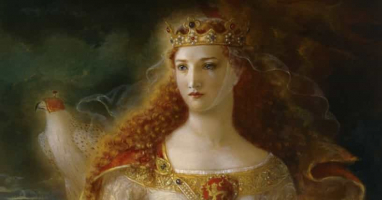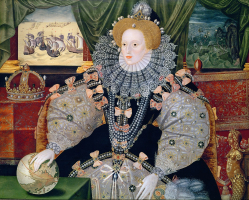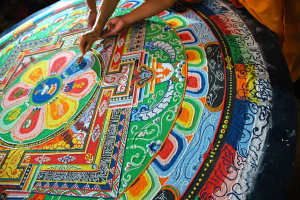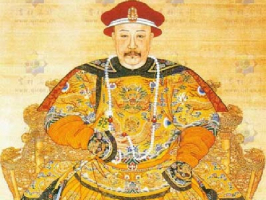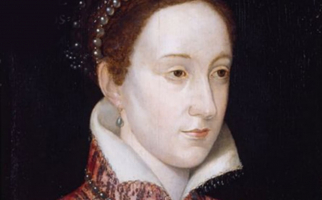Top 9 Interesting Facts about Joan of Arc
A medieval peasant girl named Joan of Arc became a saint of the Catholic Church. She is said to have guided France to victory during the Hundred Years' War ... read more...despite having no military experience, according to legend, and was eventually burned at the stake at the age of 19. In France, Joan of Arc is a national icon whose name alone evokes a legendary and enigmatic sense of pride. This courageous young girl persuaded Prince Charles of Valois to let her lead the French army to the besieged city of Orléans because she believed she had been selected by God to act on divine guidance. Do you curious about this heroine? Let's follow Toplist to discover some interesting facts about Joan of Arc.
-
The traditional Anglicization of Joan's father's last name, d'Arc (also written as Darc or Tarc), may lead one to believe that Joan was from a place called Arc. As the daughter of a farmer and his fervently Catholic wife, Jehanne—or Jehanette, as she was known—grew up in the village of Domrémy in northeastern France.
Joan gave only the name “Jehanne la Pucelle” (“Joan the Maid”) during her trial before an ecclesiastical court in 1431 and one of the interesting facts about Joan of Arc is that she was unaware of her last name. Later, she revealed that her mother's name was Isabelle Romée and that her father's name was Jacques d'Arc, noting that in her birthplace, females frequently adopted their mothers' last names. Romée merely meant a person who had undertaken a pilgrimage to Rome or another religiously significant location in medieval France, where family names were neither set nor commonly used; other accounts claim that Joan's mother went by Isabelle de Vouthon.
She was known as Jehanette in her Domrémy, northern France, homeland. Jehanne d'Arc, Jehanne Tarc, Jehanne Romée, and maybe Jehanne de Vouthon are also mentioned in the documents. So, she had many names depending on the stage and the place where she lives.
Even though Joan couldn't write, she could sign her name, always going by Jehanne. That is John in a feminine tense. Joan still goes by the name Jehanne in France.
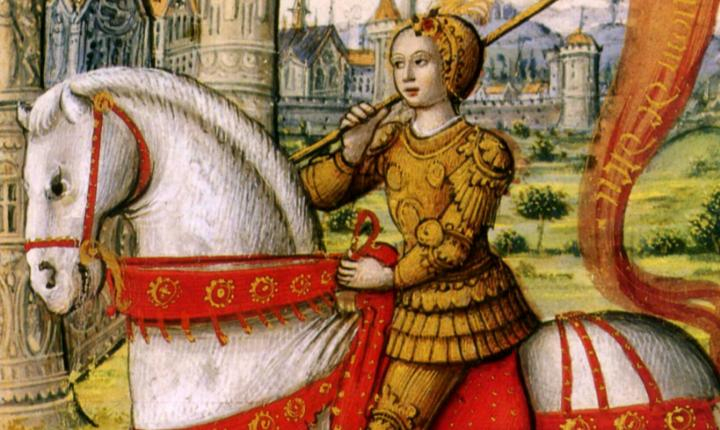
Photo: Joan of Arc - vietnamnet 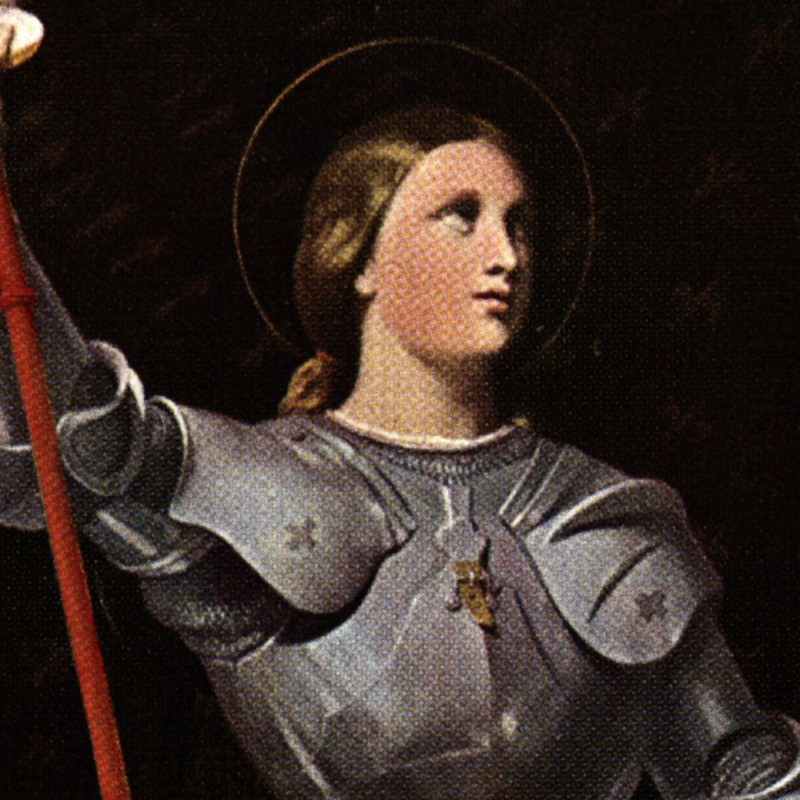
Photo: biography -
Joan of Arc reportedly started receiving voices and visions about the age of 12 or 13, which she took to be divine signals. She claimed during her trial that angels and saints first instructed her to simply go to church and live pious lives; later, they started giving her instructions to free France from the English invasion and install Charles VII, the uncrowned heir to the French throne, as the nation's legitimate king. The Maid claimed that the visions frequently included a bright light and that bells let her hear the voices more clearly.
Based on these facts, some professionals have hypothesized that Joan had one of the many neurological and mental conditions, such as migraines, bipolar disorder, and brain lesions, to mention just a few, that can cause hallucinations or delusions. Another idea suggests that she acquired bovine tuberculosis, which can result in convulsions and dementia, while caring for cattle as a young girl and consuming unpasteurized milk.
No one doubts that Joan was genuinely in touch with the archangels, but a sizable esoteric group does think she had the capacity to learn things from other worlds. The idea that everything Joan was told would happen actually occurred supports the most of it. She obviously possessed extraterrestrial talents of some kind.
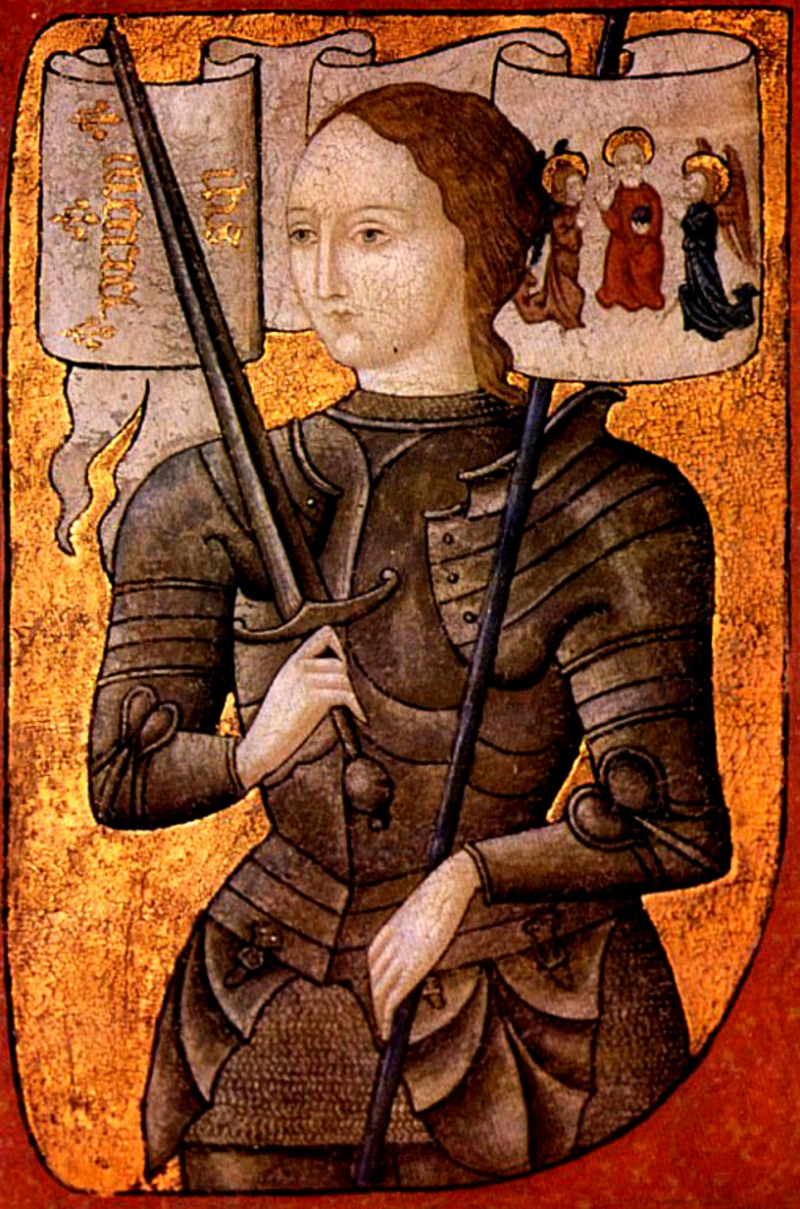
Photo: Joan of Arc -discoverwalks 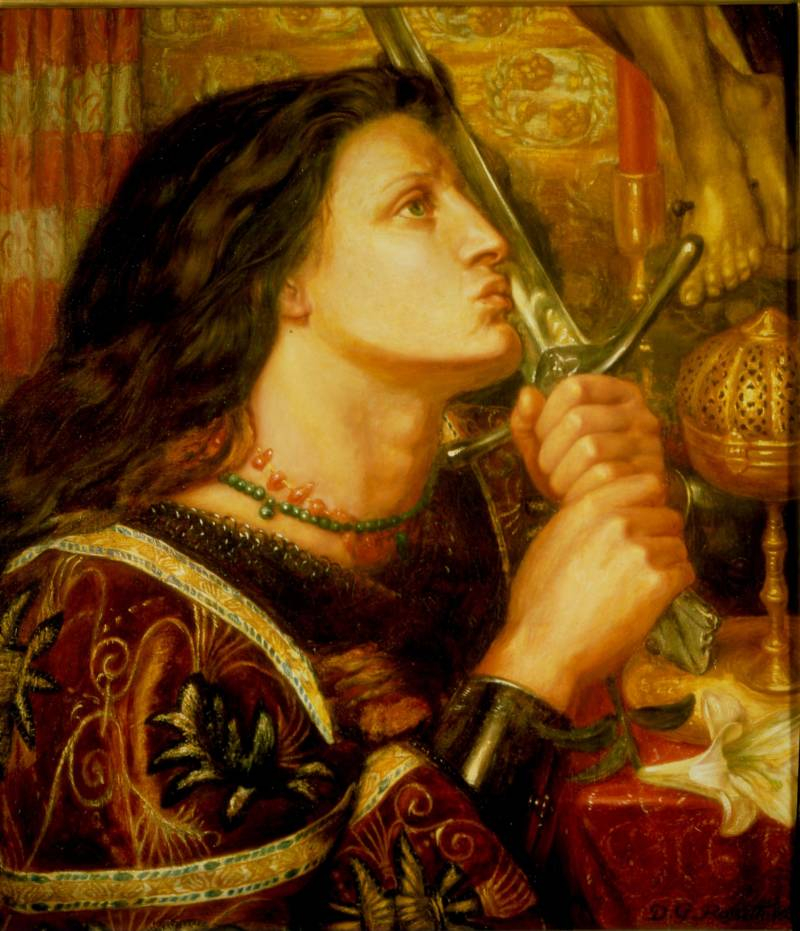
Photo: Joan of Arc - allthatsinteresting -
Joan of Arc was illiterate despite being one of France's most famous historical characters. She was born in the village of Domremy to a tenant farmer and was unable to read or write other than to sign her name. She didn't learn reading and writing as a child; instead, the Catholic Church's principles were instilled in her.
One of the interesting facts about Joan of Arc is, although Joan became well-known for her contributions to fighting in the future, she had no prior military training and no battle experience. Although Joan is regarded as a hero of the Hundred Years' War between France and England and is remembered as a fierce fighter, she never engaged in combat or killed a foe. In place of a weapon, she would instead accompany her warriors as a type of motivational mascot while waving her flag. She was also in charge of managing troops, formulating military plans, and making diplomatic recommendations to the English. Despite being far from the front lines, Joan suffered at least two wounds: a shoulder injury from an arrow during her illustrious Orléans campaign and a thigh injury from a crossbow bolt during her failed attempt to liberate Paris.
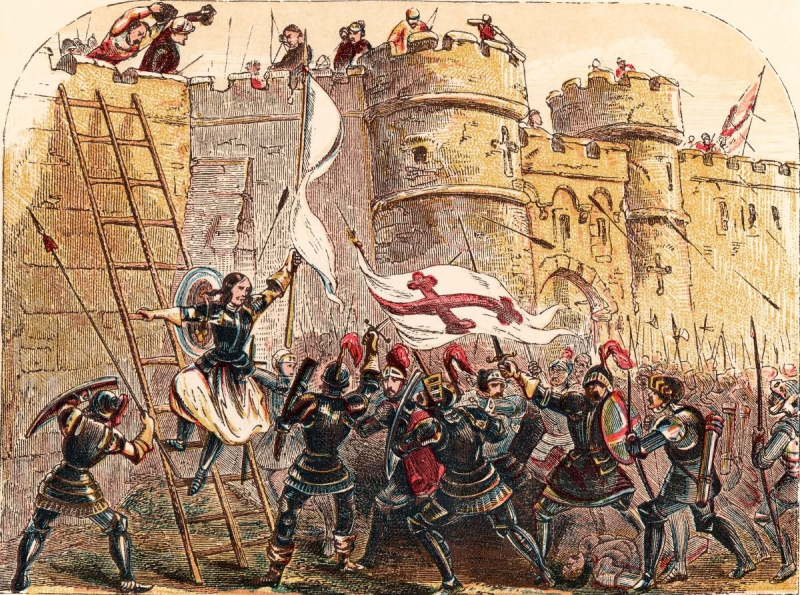
Photo: Joan of Arc - thetravel 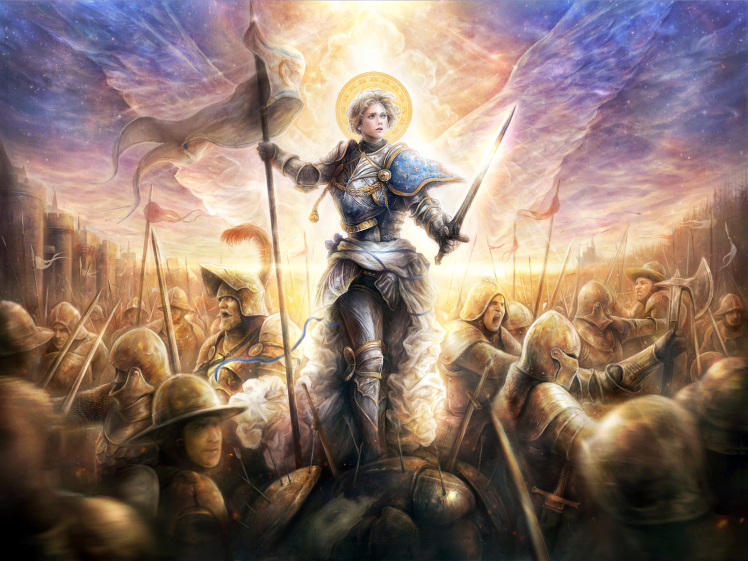
Photo: Joan of Arc - vietnamnet -
From the time of her departure to Chinon until her abjuration, Joan tended to dress more like a man than a woman. She also got a short, masculine haircut for her hair. In 1909, the bob hairstyle was invented in Paris, and Joan served as its model. She gave her hair a masculine crop. Joan was supposed to have worn a black doublet, a black tunic, and a short black cap as she departed Vaucouleurs to see the Dauphin in Chinon. She had a more fancy attire by the time she was arrested. Joan was not documented as providing a legitimate justification for her cross-dressing during the trial procedures. She claimed that she chose to dress in men's clothing and that God and his angels had ordered her to do so, not because they were asking her to. When she had completed her calling, she said she would go back to wearing women's clothing.
One of Joan's main allegations at her trial was that she had been transgender. The assessors believed it to be the symbol of her heresy. When Joan was discovered to be wearing men's clothing once more, it was assumed that she had relapsed after hearing her voices once more. This was the beginning of Joan's last sentencing.
The Church's stance on Joan's cross-dressing was unclear, despite the fact that it was used as justification for her execution. Cross-dressing was considered sinful in general, but there was disagreement over how serious it was. Also permitted were exceptions. Jean Gerson asserted that Joan's male attire and hairstyle were fitting for her calling shortly after the siege of Orléans was lifted since she made herself known as a fighter and men's clothing was more functional.
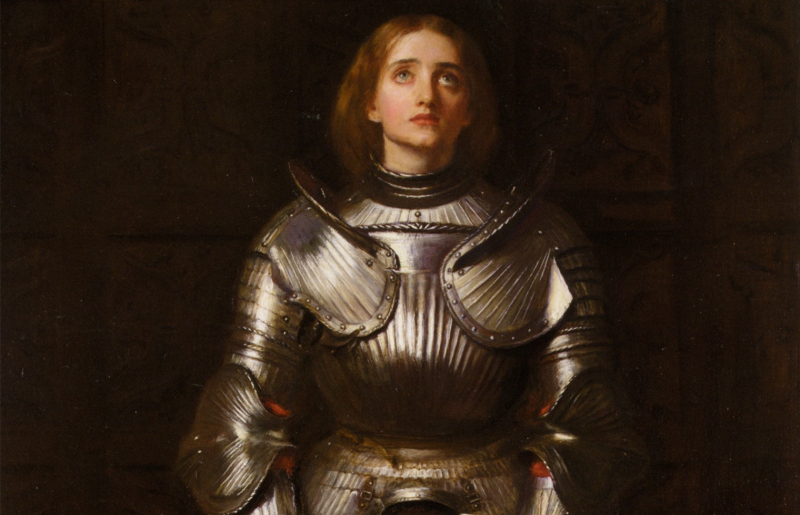
Photo: Joan of Arc in men's clothing - aleteia 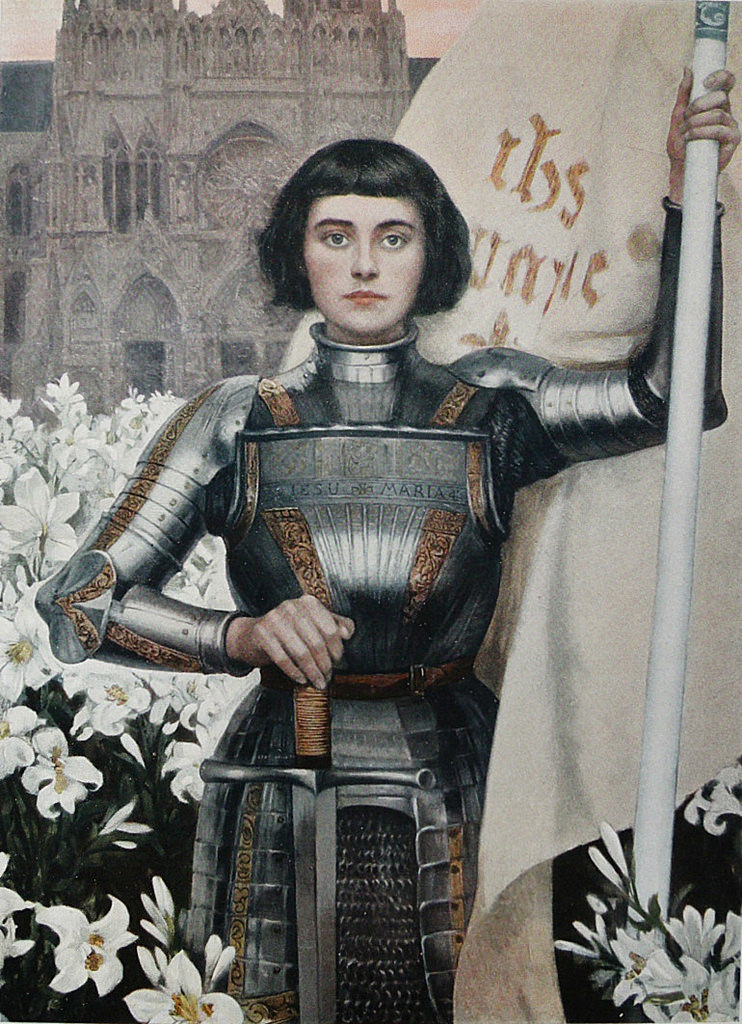
Photo: Joan of Arc with bob hair - rhapsodyinwords -
One of the interesting facts about Joan of Arc is she had a famously volatile temper. When given command of the French army, the adolescent peasant didn't think twice to scold illustrious knights for using profanity, acting inappropriately, skipping Mass, or disregarding her combat strategies; she even charged her noble patrons of lacking spine in their interactions with the English.
At her retrial, witnesses said that Joan had attempted to smack a Scottish soldier who had consumed stolen meat. The Scots and France fought together during the Hundred Years' War. As she allegedly drove away, she struck one or two of the mistresses and prostitutes who were traveling with her army. Joan was reportedly angered by the English's personal attacks against her, including their slurs and jokes suggesting she go back to her cows. Transcripts of The Maid's court appearances reveal her temper issues; when a clergyman with a strong regional accent inquired as to what language her voices spoke, for example, she spat back that they spoke French much better than he did.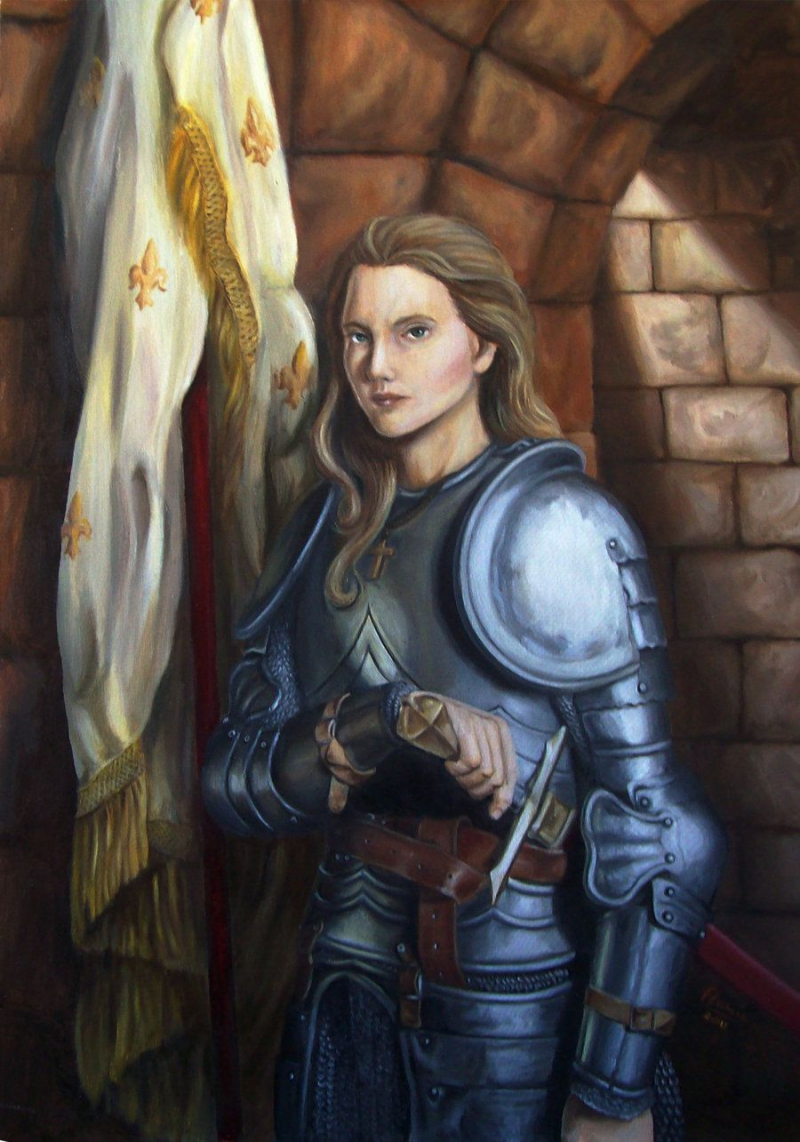
Photo: Joan of Arc - pinterest 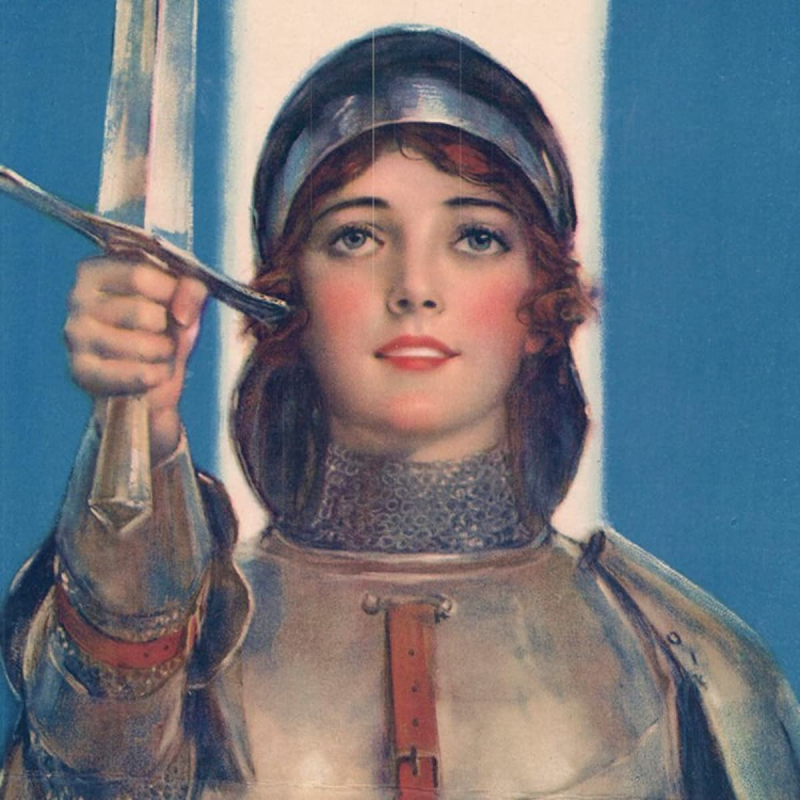
Photo: Joan of Arc - daily.jstor.org -
Joan of Arc was brought before an ecclesiastical court in Rouen, the English stronghold, after she was captured by the enemy in 1430. The 70 charges against her, which included anything from sorcery to horse theft, had been reduced to just 12 by May 1431, with the majority relating to her donning men's garb and assertions that God had spoken to her personally. Joan agreed to confess her claimed transgressions and make a commitment to change after being offered life in jail in return for admitting guilt. Today, some historians genuinely think that Joan's illiteracy caused her to not understand what she was signing.
A few days later, maybe in response to her guards' aggression or rape threats, Joan changed back into male clothing and informed the irate judges who came to visit her in her cell that her voice had returned. These two actions led to Joan being condemned as a “relapsed heretic” and executed by being burned at the stake.
Since her passing, Joan has gained a reputation as a martyr. She rose to become a national emblem of France following the French Revolution. She was made a saint in 1920 and designated as France's secondary patron saint in 1922. Joan of Arc is still a well-liked figure in contemporary literature, art, music, and sculpture, and cultural representations of her are still being produced.
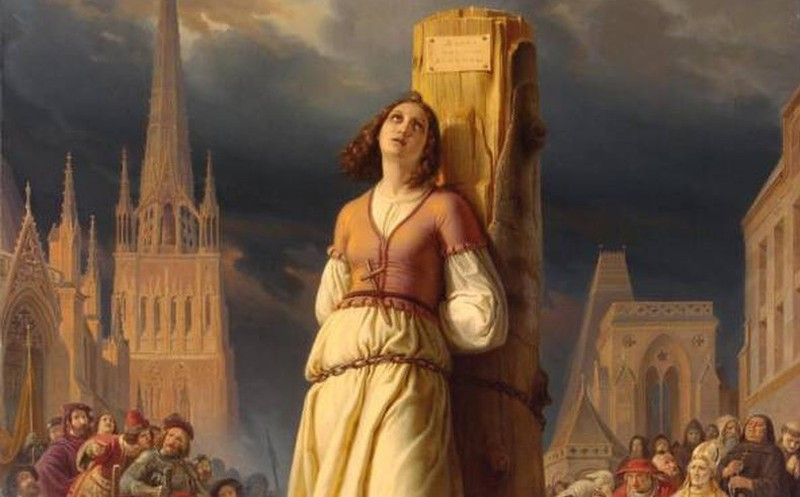
Photo: Joan of Arc being burned at the stake - baophapluat 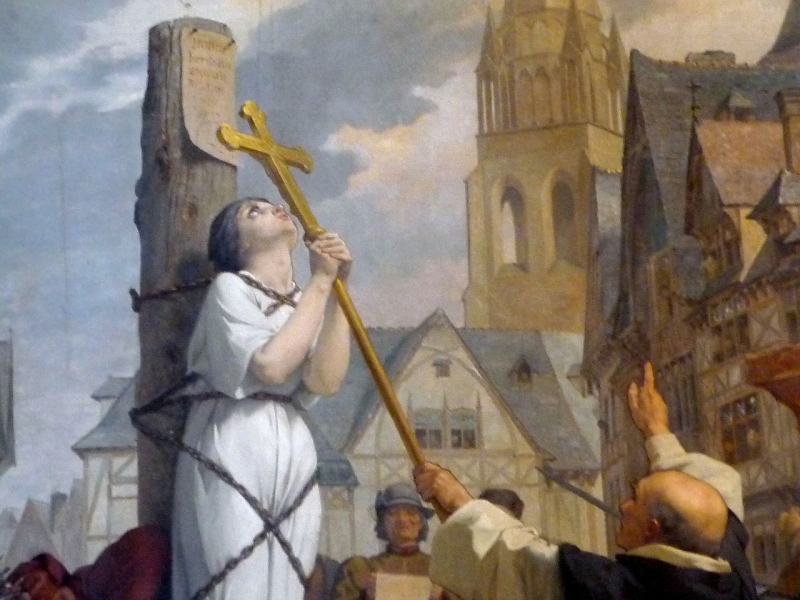
Photo: Joan of Arc being burned at the stake - commons.wikimedia.org -
Claude des Armoises, one of several women who pretended to be Joan in the years after her death, resembled the well-known heretic and had allegedly taken part in military operations while costumed as a man. She concocted a plan with two of Joan's brothers, Jean and Pierre, in which Claude appeared to the inhabitants of Orléans, professing to have escaped her captors and wed a knight while residing in obscurity. Before Claude ultimately told Charles VII, whose ascent Joan had arranged in 1429, of the trio's ruse, they received extravagant presents and attended numerous celebratory gatherings.
Despite being complicit in the fraud, Jean and Pierre were instrumental in getting Pope Callixtus III to grant Joan's request for a new trial. By the 1450s, it seems likely that they had given up on the lie that she would survive.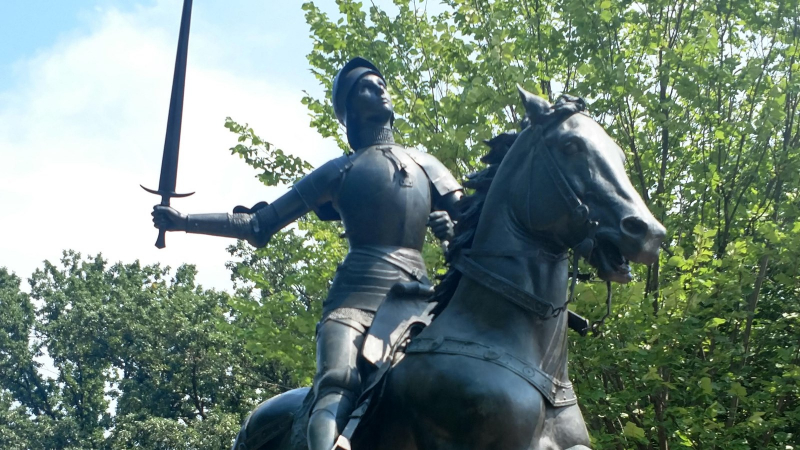
Photo: Joan of Arc statua - nps.gov 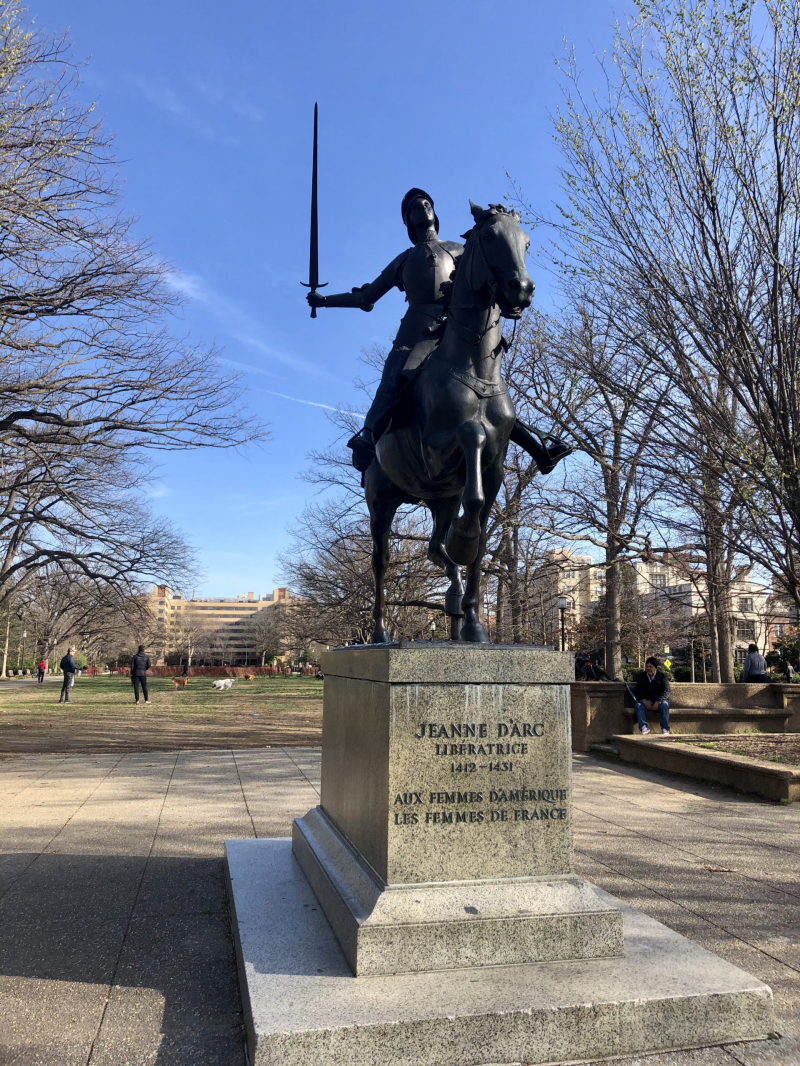
Photo: Joan of Arc's statua - frenchamericancultural -
According to the Roman Catholic Church, Joan is a virgin saint. Since the end of the siege, Joan has been revered in Orléans as a holy icon, and until the 1800s, the city recited a yearly panegyric in her honor. Félix Dupanloup, the Bishop of Orléans, made a panegyric that garnered attention worldwide in 1849, and he petitioned Rome to start the beatification process in 1869. Pope Pius X beatified her in 1909, and Pope Benedict XV canonized her on May 16, 1920. The anniversary of her execution, May 30, is her feast day. Joan was named a minor patron saint of France by Pope Pius XI in an apostolic letter he issued on March 2, 1922.
Today, Joan of Arc is recognized for more than only her significance in French history. In fact, she serves as a source of inspiration for both Catholics and non-Catholics. As a result of her valiant deeds and willingness to give up her life so that France could be free from its English-Burgundian overlords, the French people regarded Joan in high regard. The peasant girl who rose to prominence as a military commander, a martyr, and eventually a saint is still revered as a symbol of faith and independence in France and other countries today.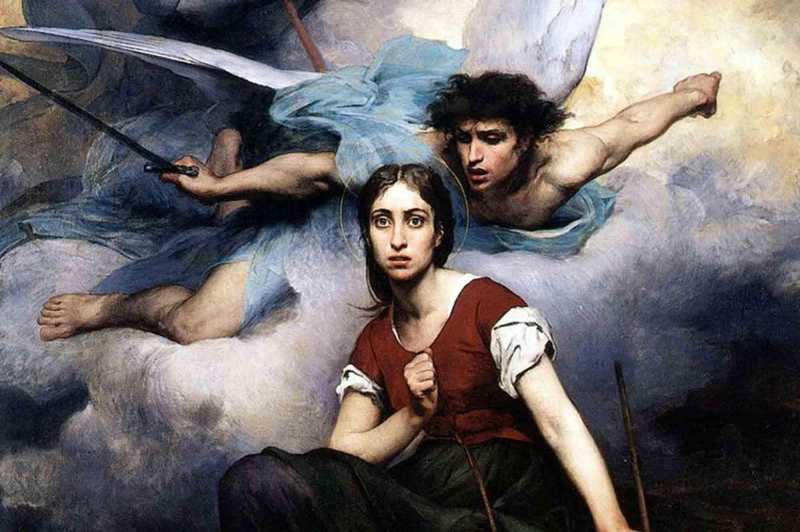
Photo: Joan of Arc, patron saint of France - faithmag 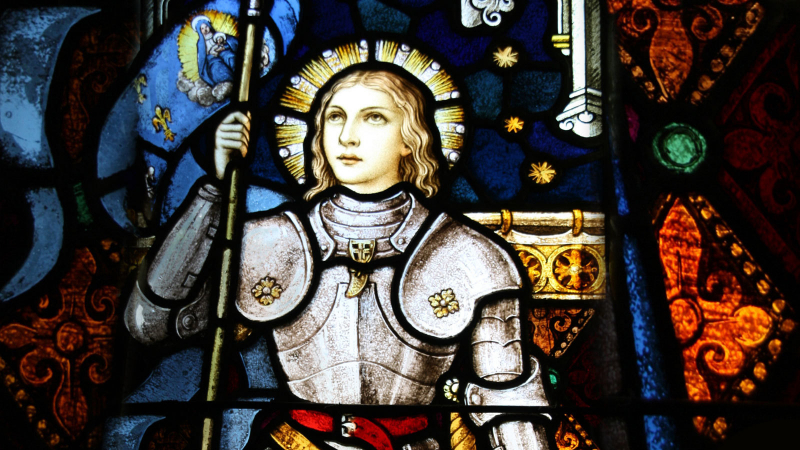
Photo: Joan of Arc, patron saint of France - americaneedsfatima -
People have been inspired for generations by the legend surrounding this enigmatic peasant girl who, from lowly beginnings in the town of Domrémy, ascended to heroic sainthood. However, historians have been quick to cast doubt on the probability of such modest origins, with some even suggesting that given her incredibly unusual aptitude, she wasn't a peasant at all.
Young peasant girls would typically spend their days weaving or spinning, sometimes even carrying water. No of what household chores they were assigned, girls were not even permitted to use a sword, let alone learn to ride trained warhorses. Nevertheless, the little girl rode 11 nights at high pace to reach Chinon unharmed in February 1429, undaunted by the treacherous, unlit forest and miserable weather because it was the dead of winter.
She could ride a warhorse that skillfully, thus the peasant roots couldn't be likely, according to skeptic historians. From putting out the flames on the banner at Orleans to couching her lance on Ascension Day, she continually displayed outstanding riding. She also famously led the mercenary troop near the end of her life. How could she be so knowledgeable without training?She had an outstanding command of military strategy, which is puzzling given that she claimed to be a peasant. To train their boys the finer points of war strategy, how to ride, and how to wield knightly weapons like a lance, a sword, and a shield, noble families in medieval times had to spend enormous sums of money.
But despite her humble peasant beginnings, Joan of Arc is said to have been born with the strength, talent, and strategic understanding to lead an entire nation to glory.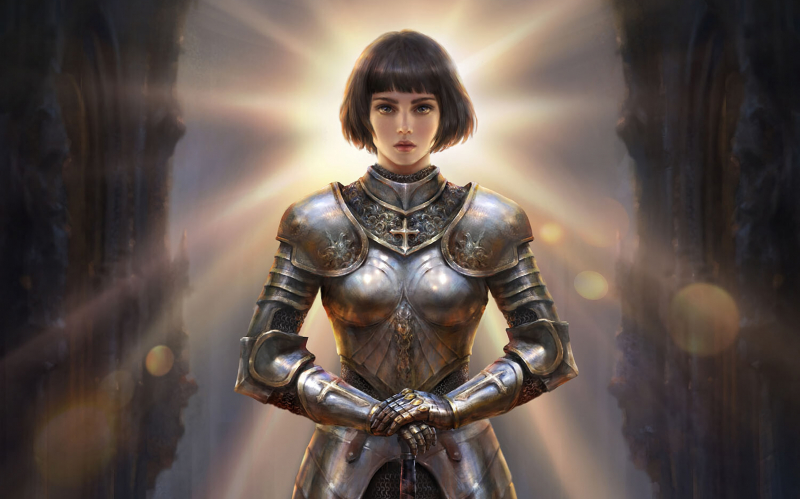
Photo: Joan of Arc - wall.alphacoders 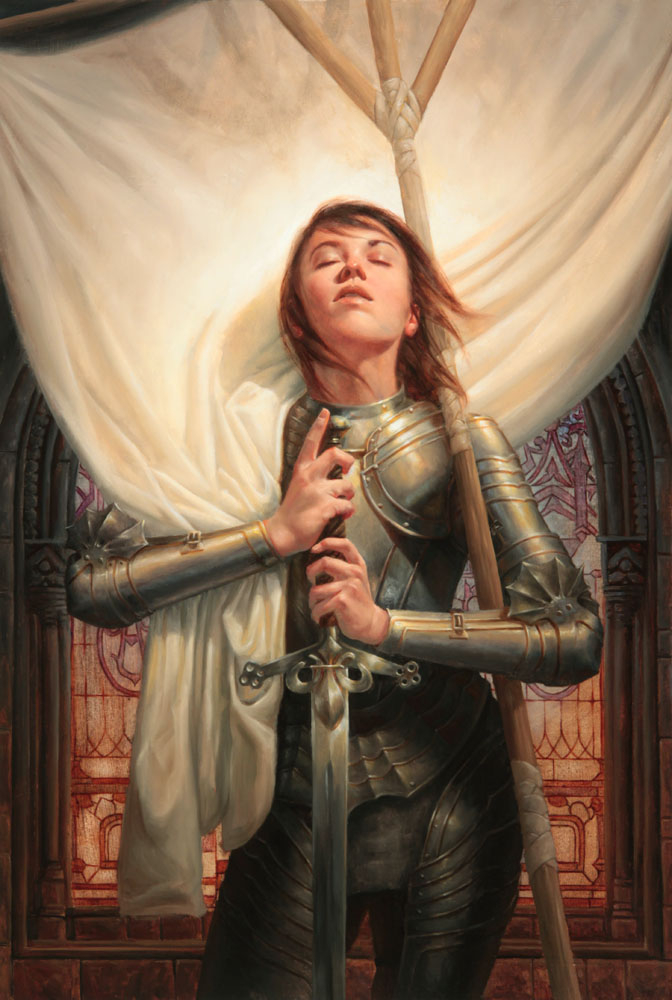
Photo: Joan of Arc - blog.acton.org












